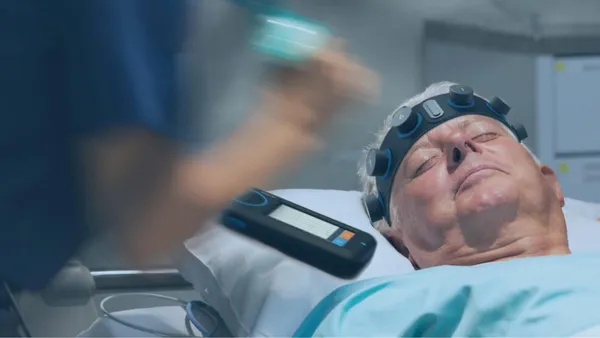Dive Brief:
-
Needham analysts have tipped Zimmer Biomet to spend more time at the deal table in 2021 as it seeks to offload low-growth businesses and acquire fast-growing assets.
-
In a note to investors sent Tuesday, the analysts said Zimmer Biomet is likely to initially target private orthopaedic companies worth up to $300 million but could gain the capacity to buy assets for up to $1.5 billion. The analysts identified sports medicine, extremities and trauma (SET) as a likely focal point for the medtech's M&A.
- The Needham analysts published the note the day after peers at SVB Leerink expressed increasing confidence in Zimmer Biomet's near-term prospects, reflecting recent comments by CEO Bryan Hanson and market signals from preliminary results of orthopaedic rival Smith & Nephew.
Dive Insight:
The company ran into supply issues and other problems in the years after Zimmer's $14 billion merger with Biomet, giving CEO Hanson a turnaround job when he took over the top role late in 2017. One priority has been to increase the company’s growth rate. Having taken a look at Zimmer Biomet's balance sheet, analysts at Needham think the company is positioned to strike deals to achieve its growth goals.
The analysts expect Zimmer Biomet to start with deals worth $300 million or less. The lack of public companies of that value in Zimmer Biomet's areas of focus suggests it will target private players that can grow faster than its broader business.
"We expect [Zimmer] to acquire businesses that are in large markets, with high growth rates, have innovative and differentiated products, and/or that diversify [Zimmer] beyond orthopaedic implants into adjacencies," the analysts wrote.
The Needham team said identifying and buying companies with those desired characteristics "won't be easy" but will be needed to accelerate growth at Zimmer Biomet. To add to the challenge, the analysts calculate the company will need to strike multiple deals.
By analysts' calculations, if Zimmer Biomet wants to add 1% to its weighted average market growth rate, it will need to spend around $3.8 billion.
Based on its balance sheet, the analysts expect Zimmer Biomet's M&A push to start small but potentially scale up to include deals worth upward of $1 billion. The analysts said the market growth of SET, plus Zimmer Biomet's relatively low market share in those areas, make it an attractive area for M&A, singling out lower extremities as a business in which the company has opportunities to grow.
Alternatively, the medtech could expand into adjacent areas. The Needham analysts identified Boston Scientific and Stryker as examples of companies that have successfully pursued that strategy. If Zimmer Biomet goes down that route, it could buy its way into the markets for operating room equipment, biologics, wound-care products and pain drugs.
The analyst predictions are in line with comments Hanson made on a conference call with investors in August.
"We will continue to focus on high-growth areas and the areas where we truly believe we have a right to win. The size is going to be a factor here as well with a preference, at least at the outset, toward tuck-in deals that we can easily integrate and operationalize, while also maintaining an investment grade rating," the CEO said.
Zimmer Biomet could increase its average growth rate and gain money for M&A by offloading slow-growing businesses. The Needham analysts identified the company's spine and dental businesses as units that may be divested as they are "sub-scale and have consistently underperformed their respective markets."
Separately, analysts at SVB Leerink published a note about organic growth at Zimmer Biomet based on their conversation with its CEO. Hanson reportedly said Smith & Nephew's preliminary third quarter results were directionally consistent with his expectations, increasing the analysts' confidence that Zimmer Biomet will perform at least as well as its rival when it publishes its financials early next month.
Beyond that, Hanson said overall organic growth of 4% to 5% is a very realistic prospect within the next two years. Even if dental and spine underperform, the analysts think knees, hips and SET could make up the shortfall.











